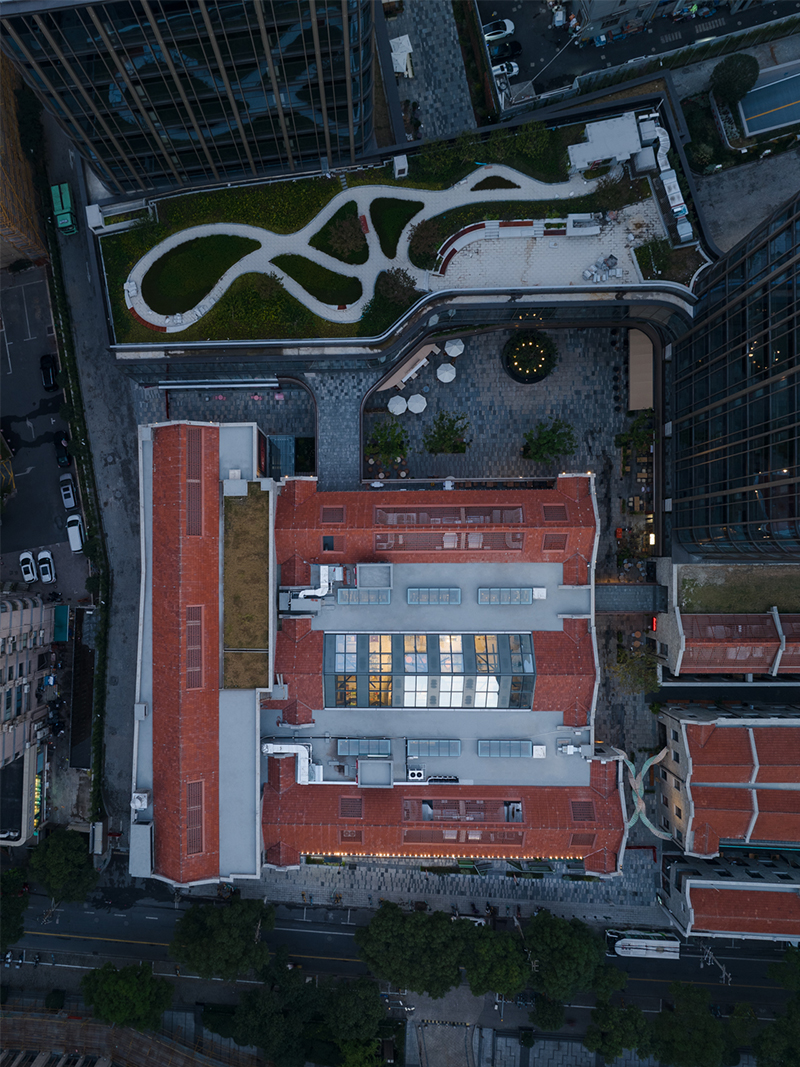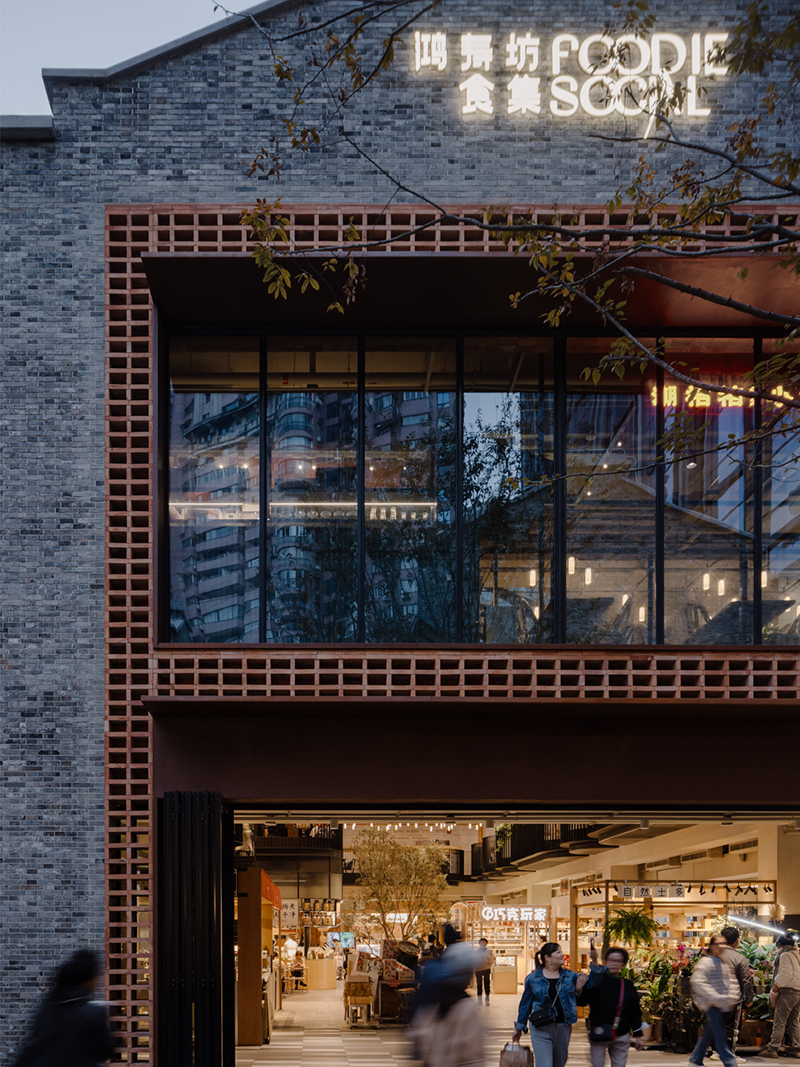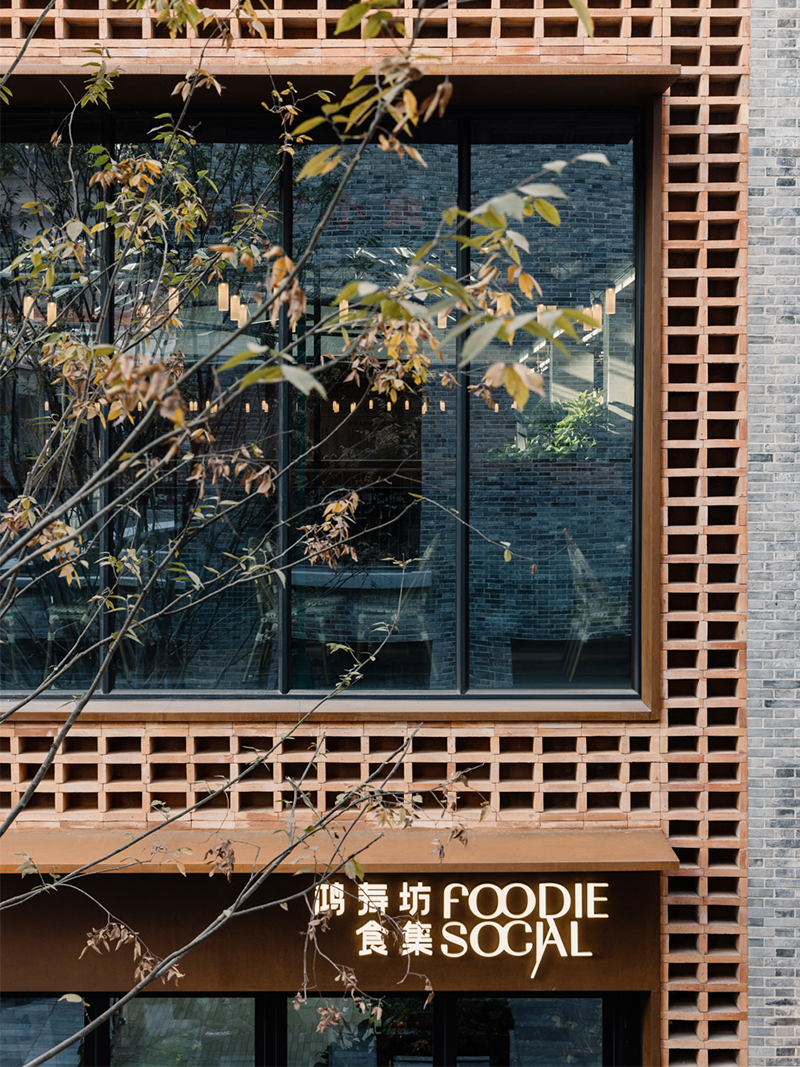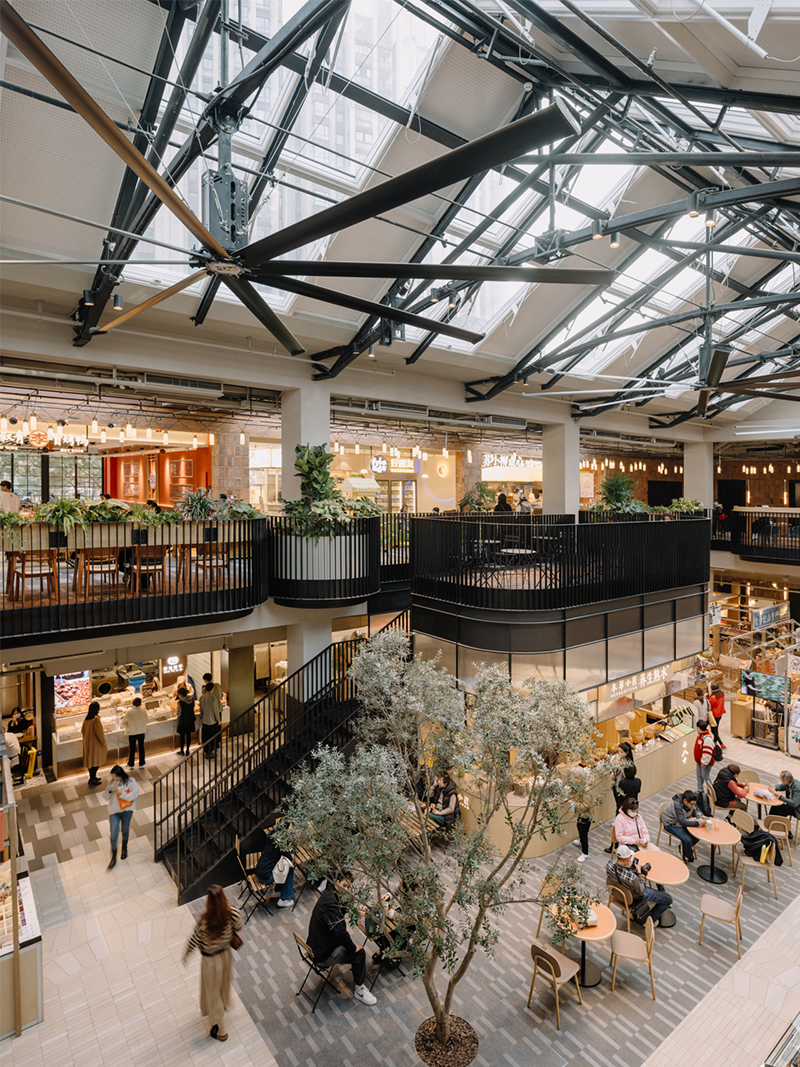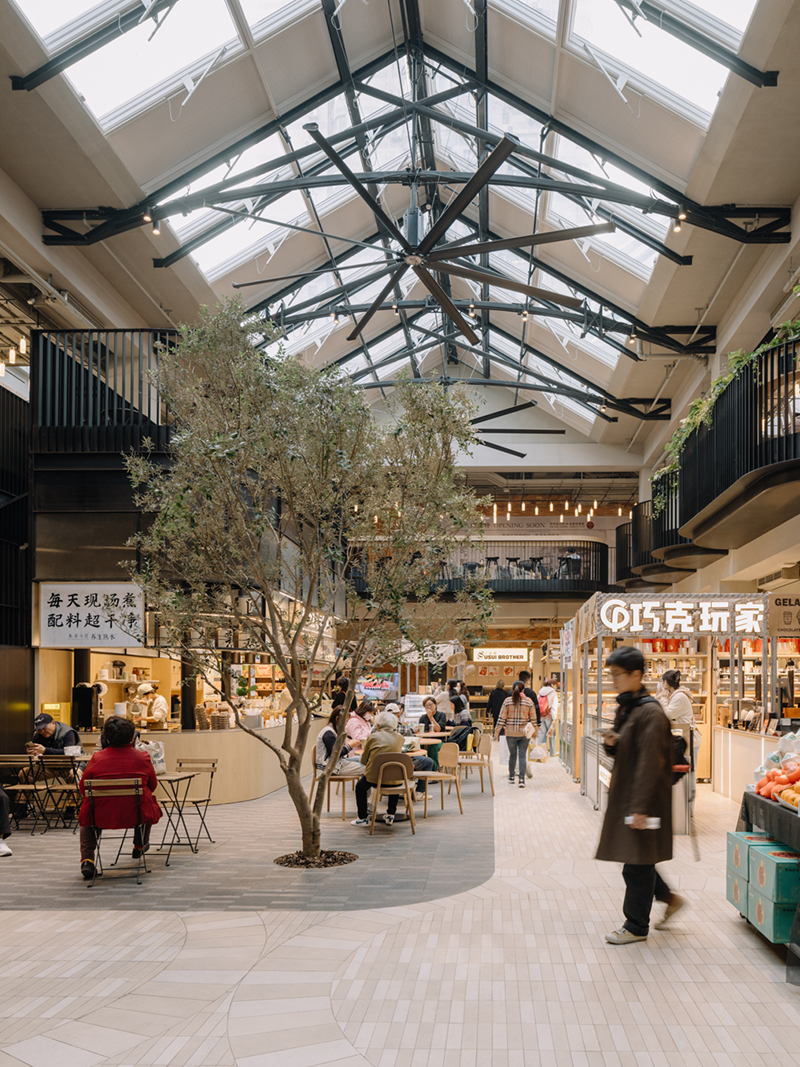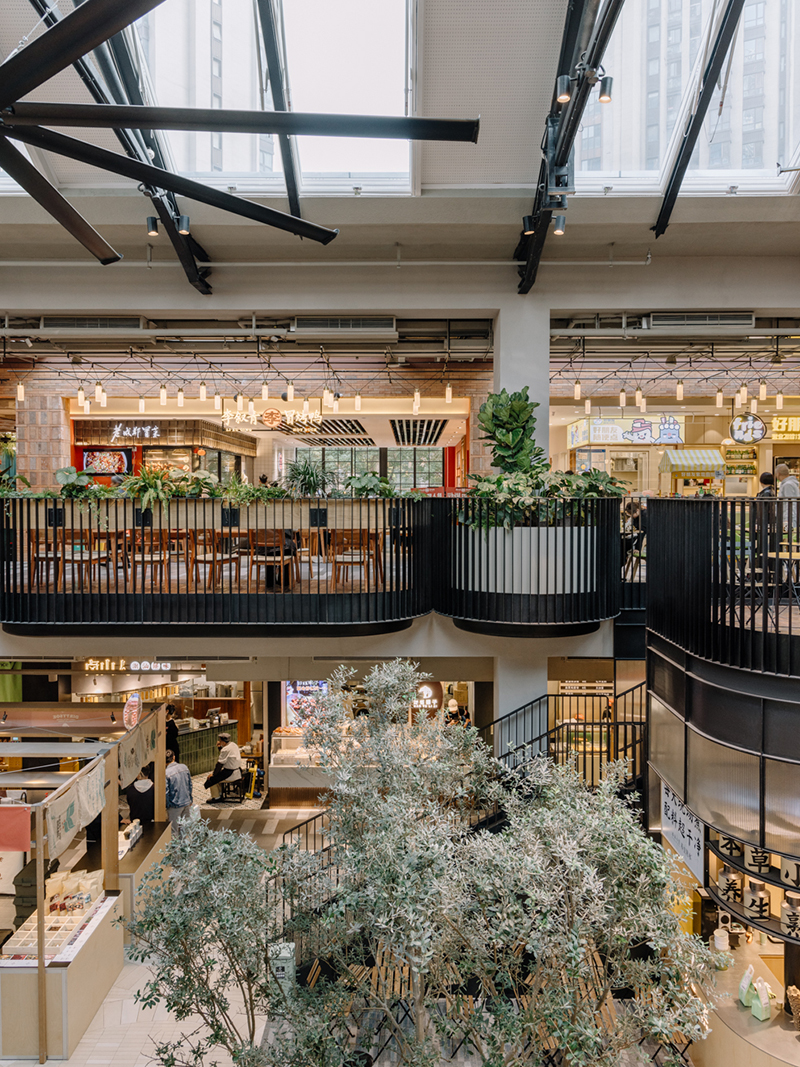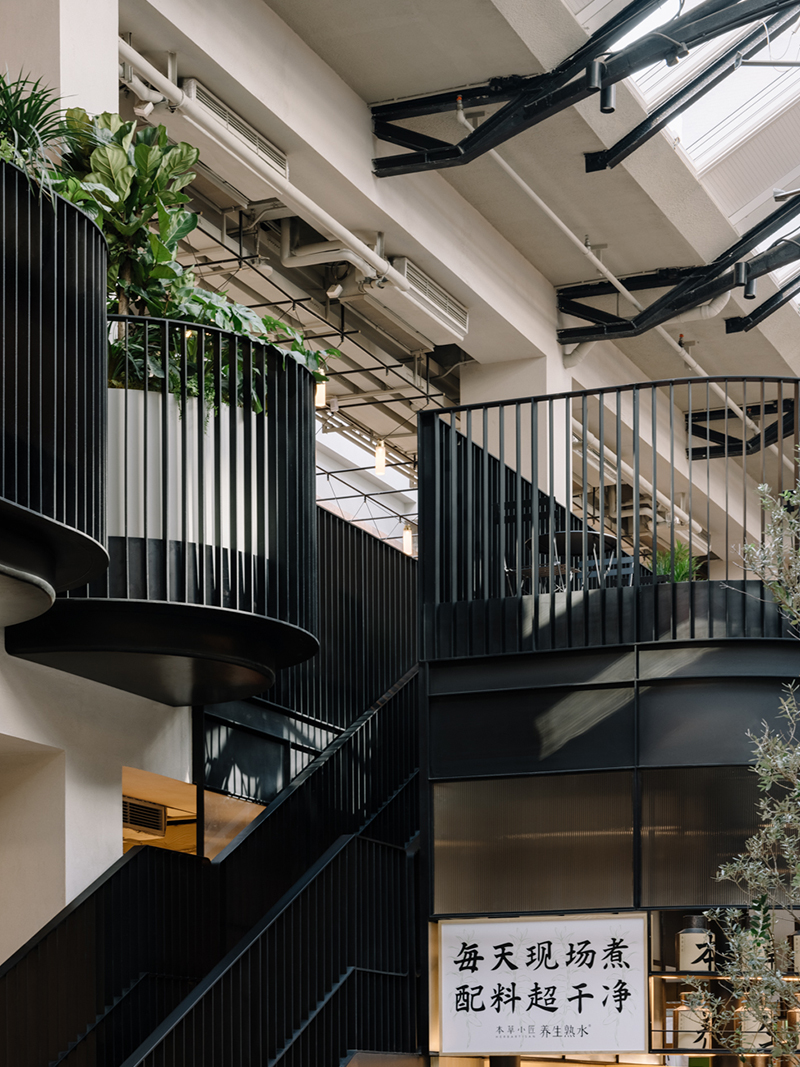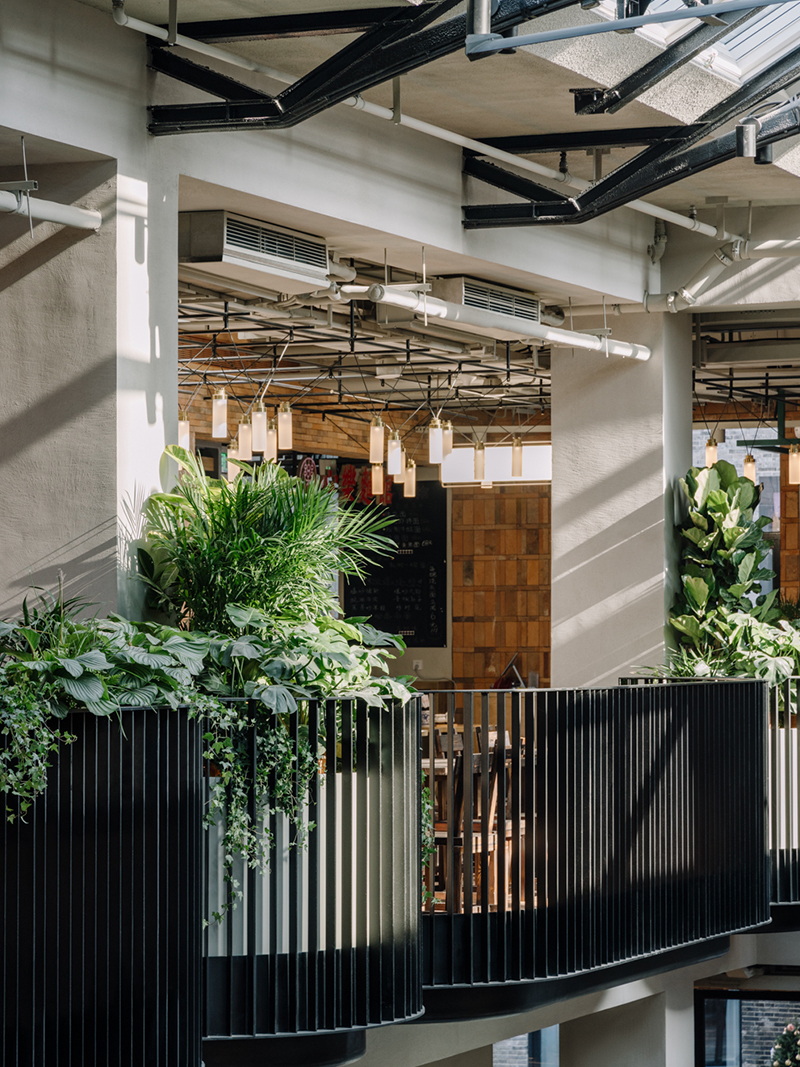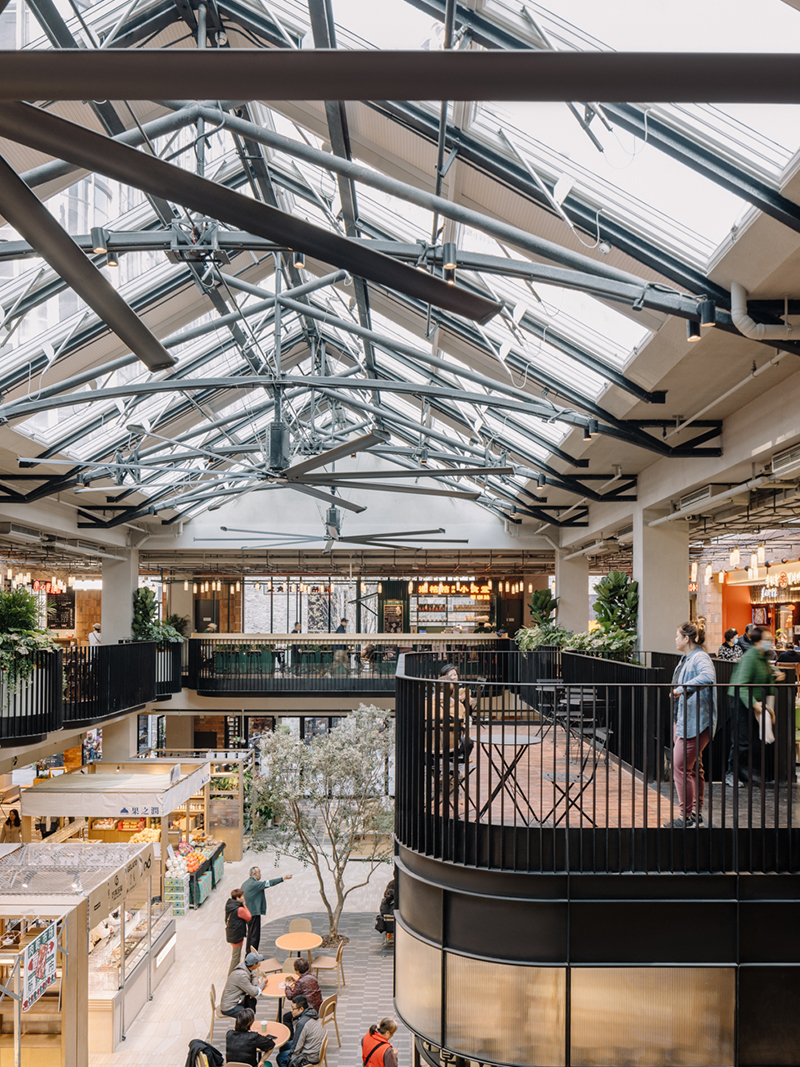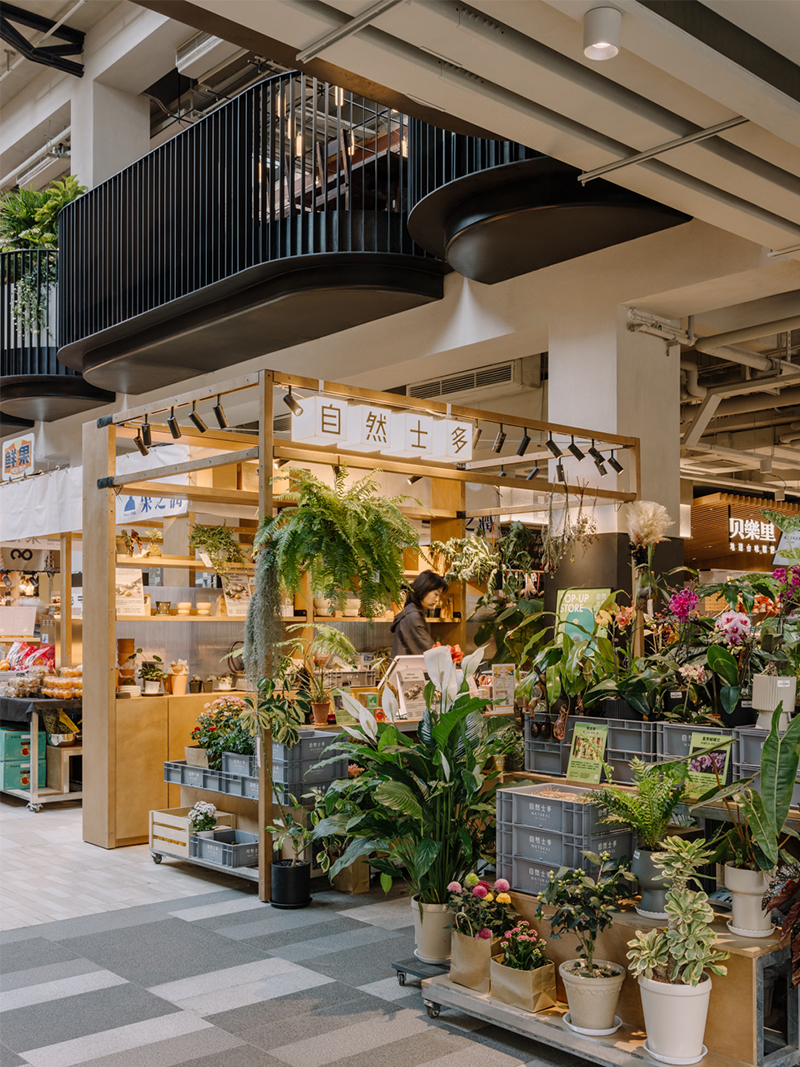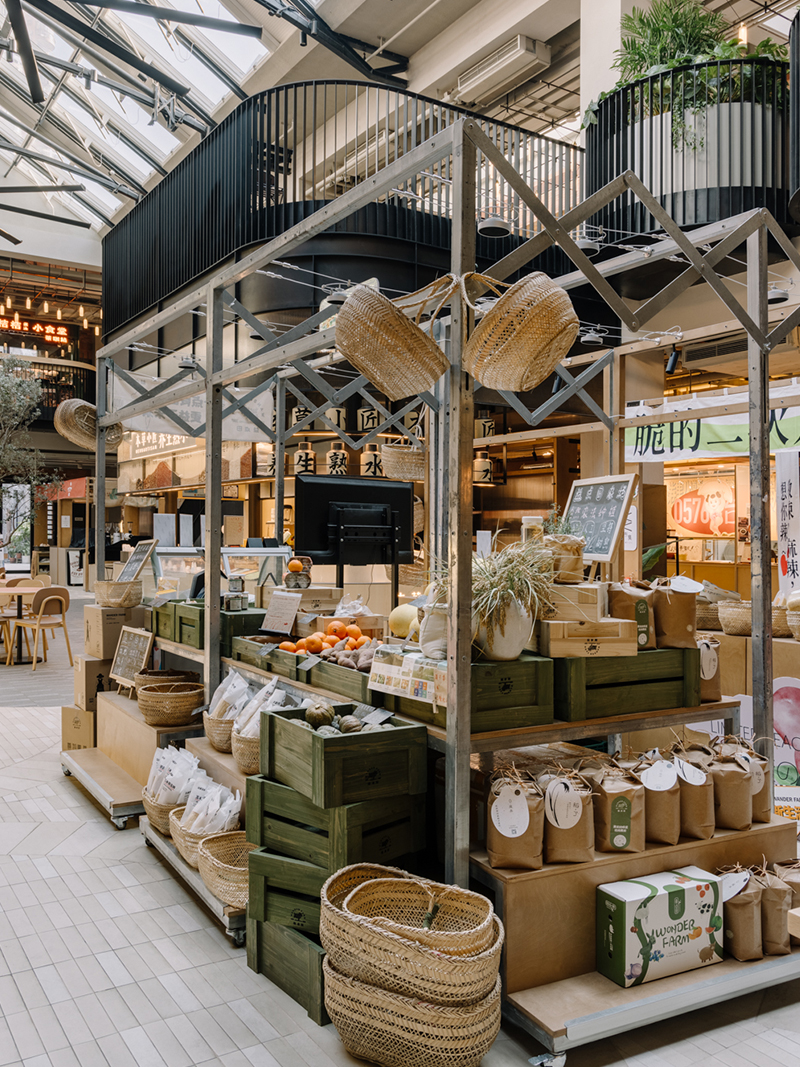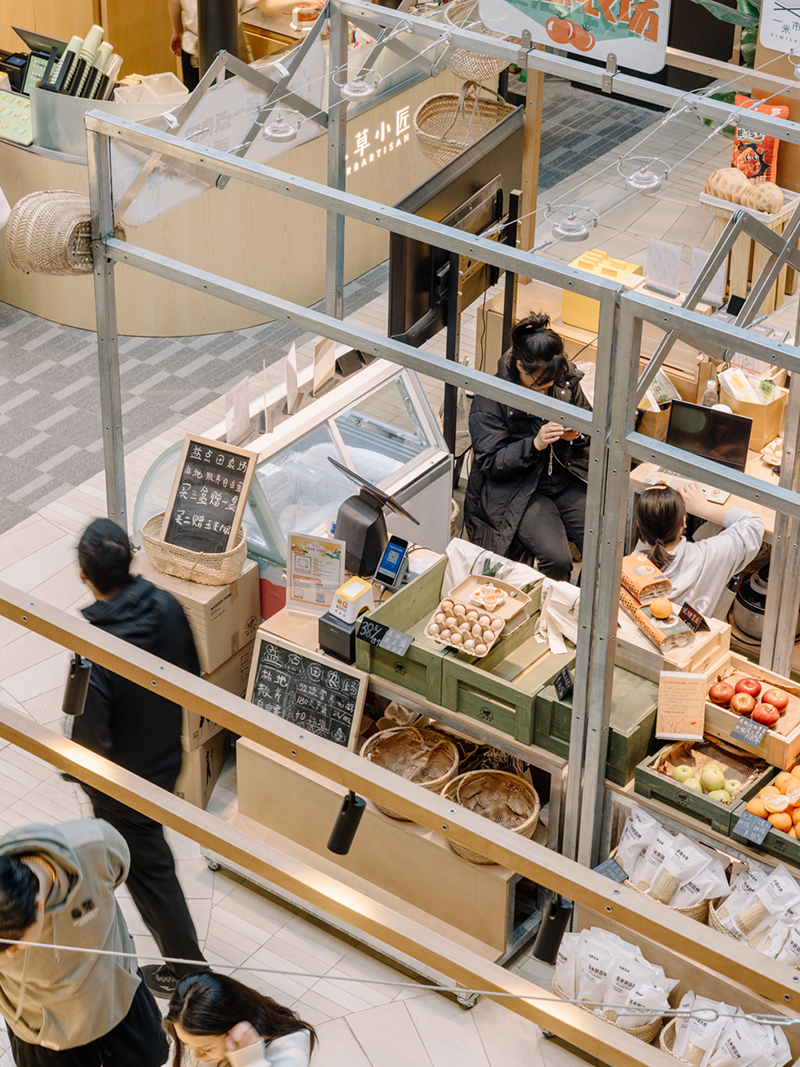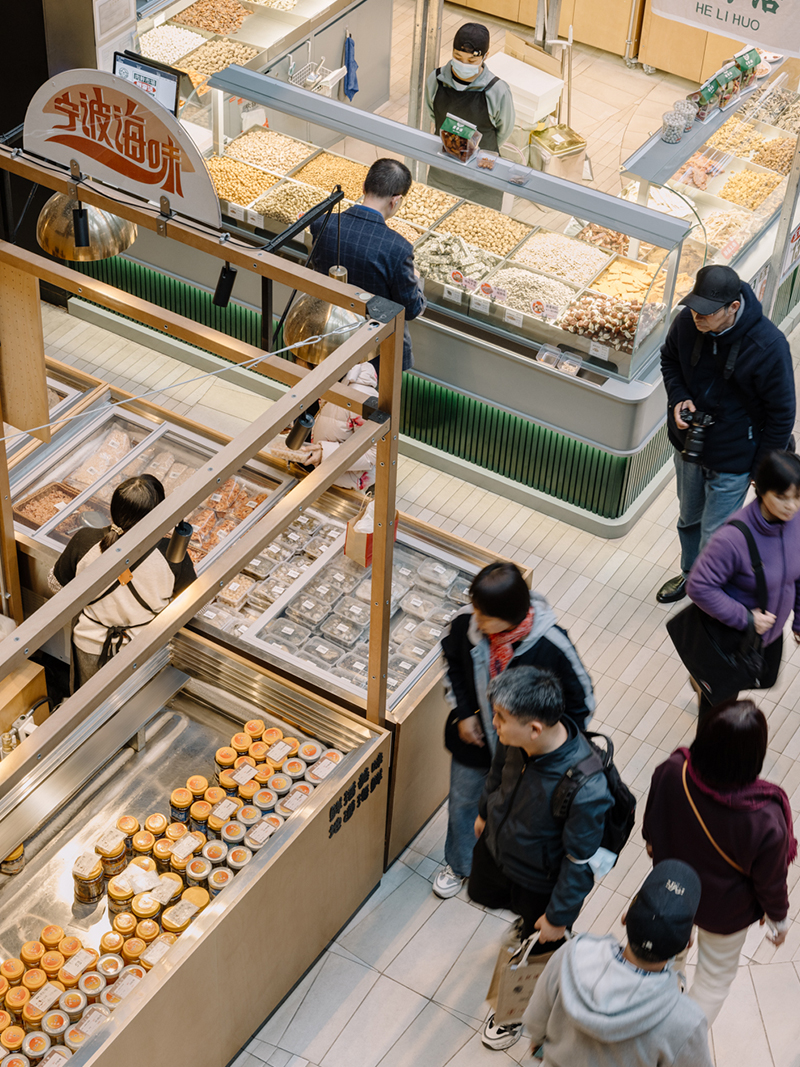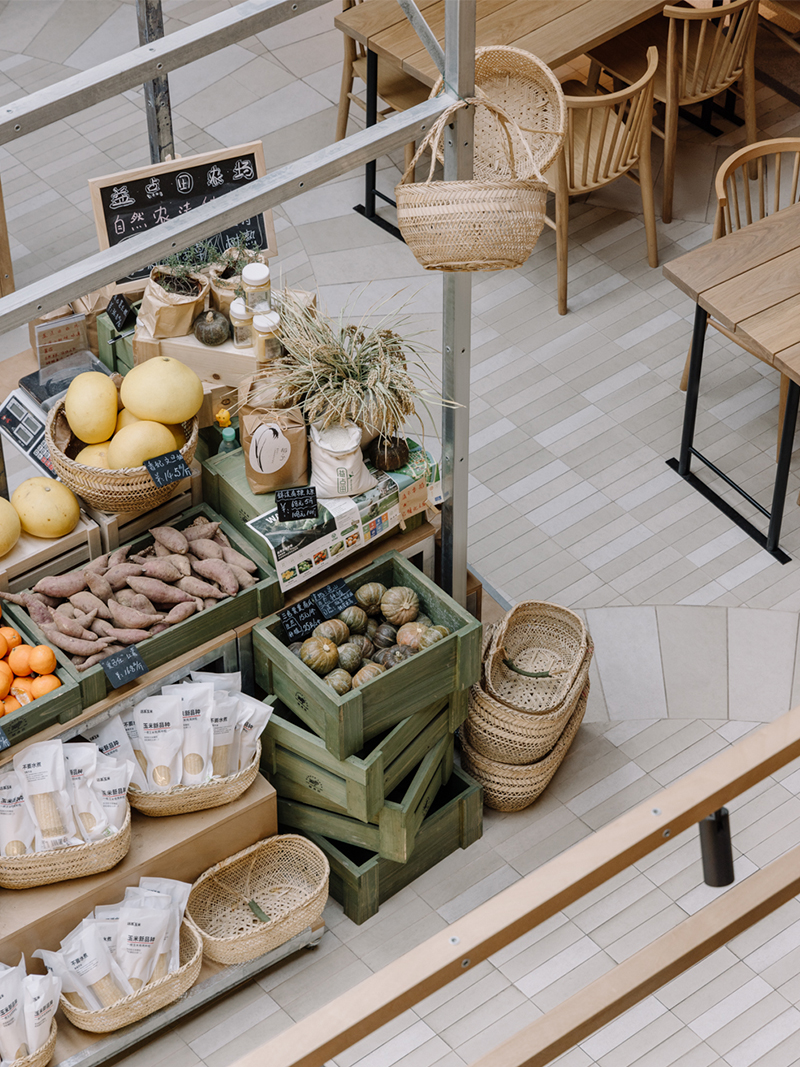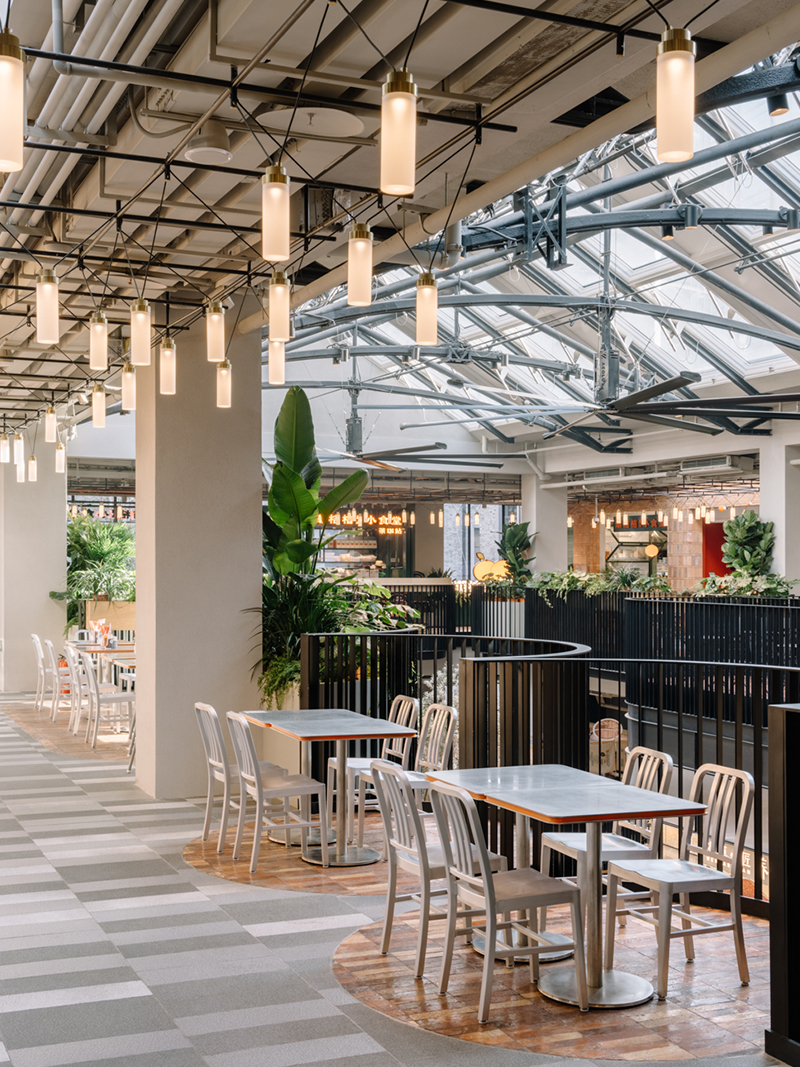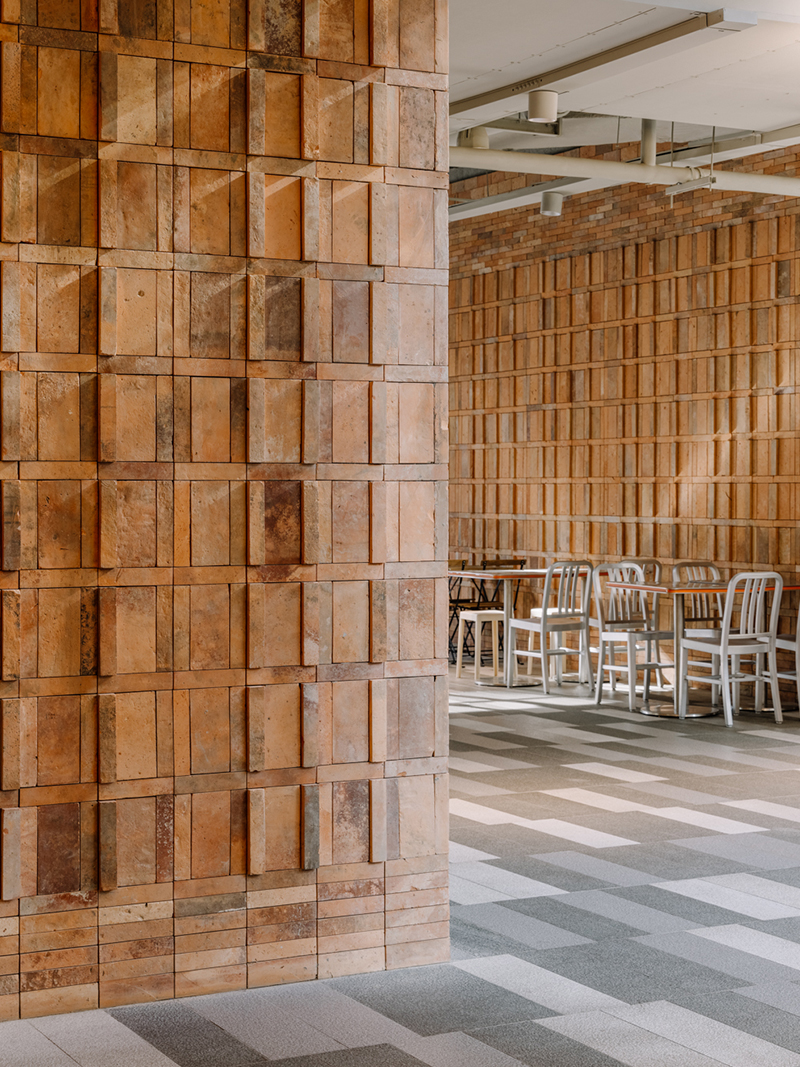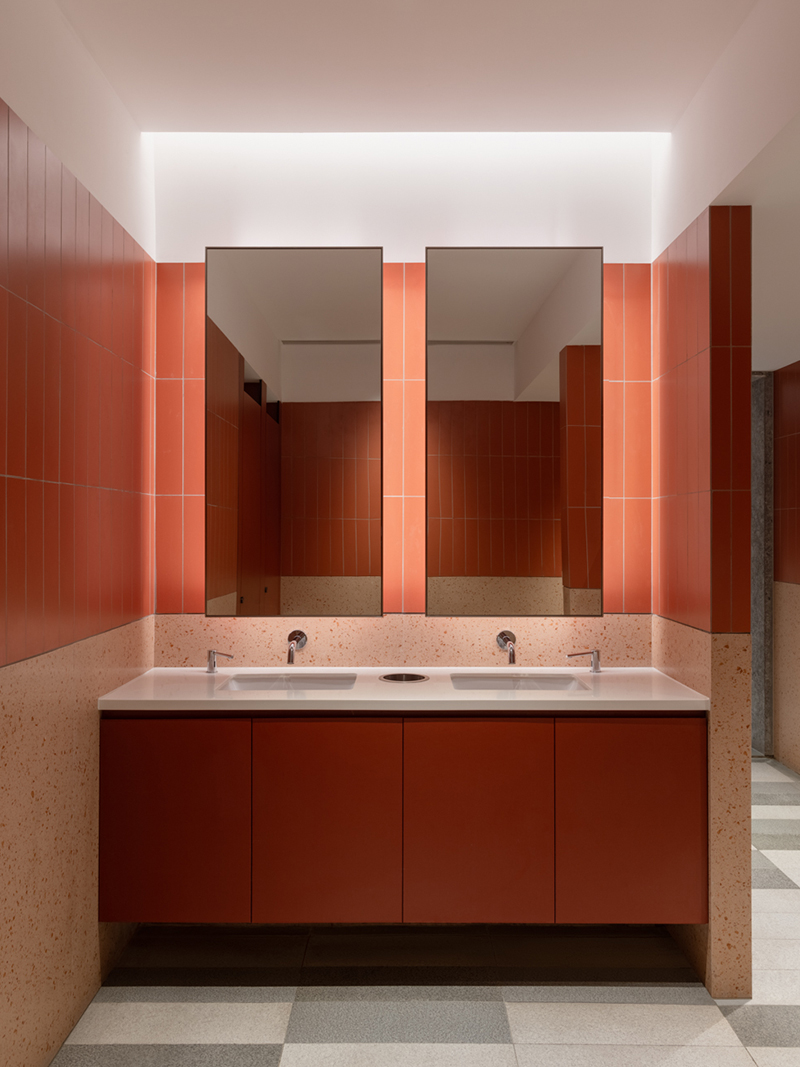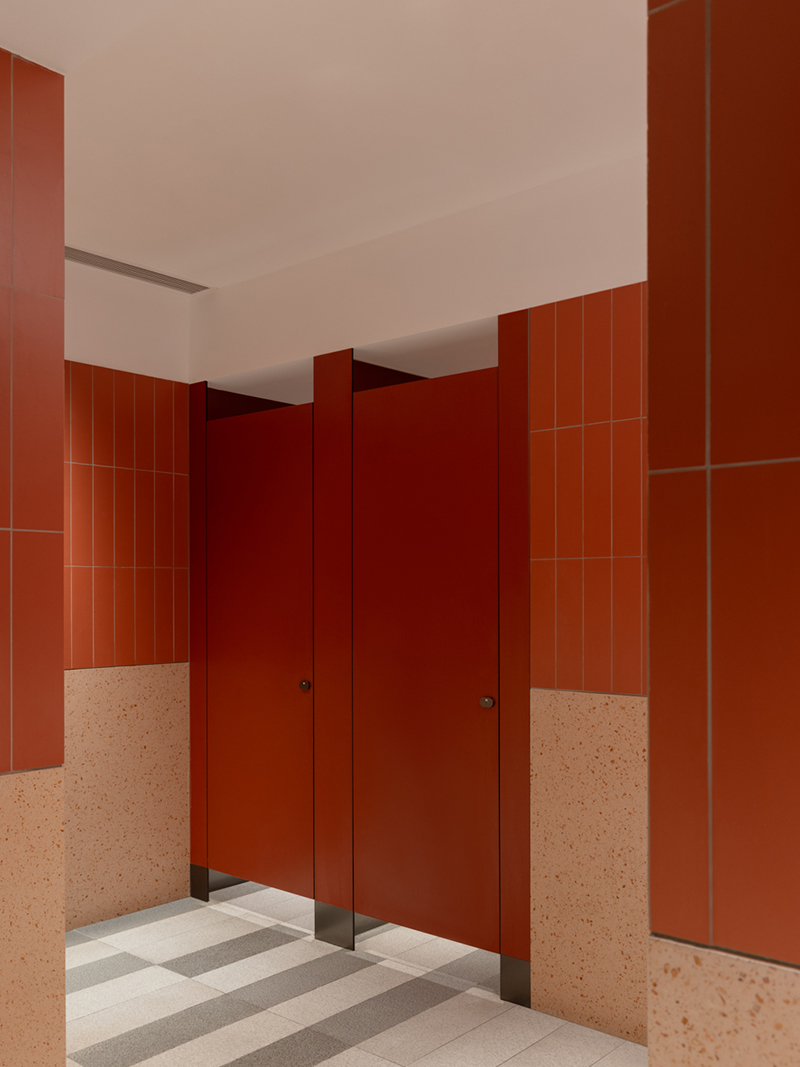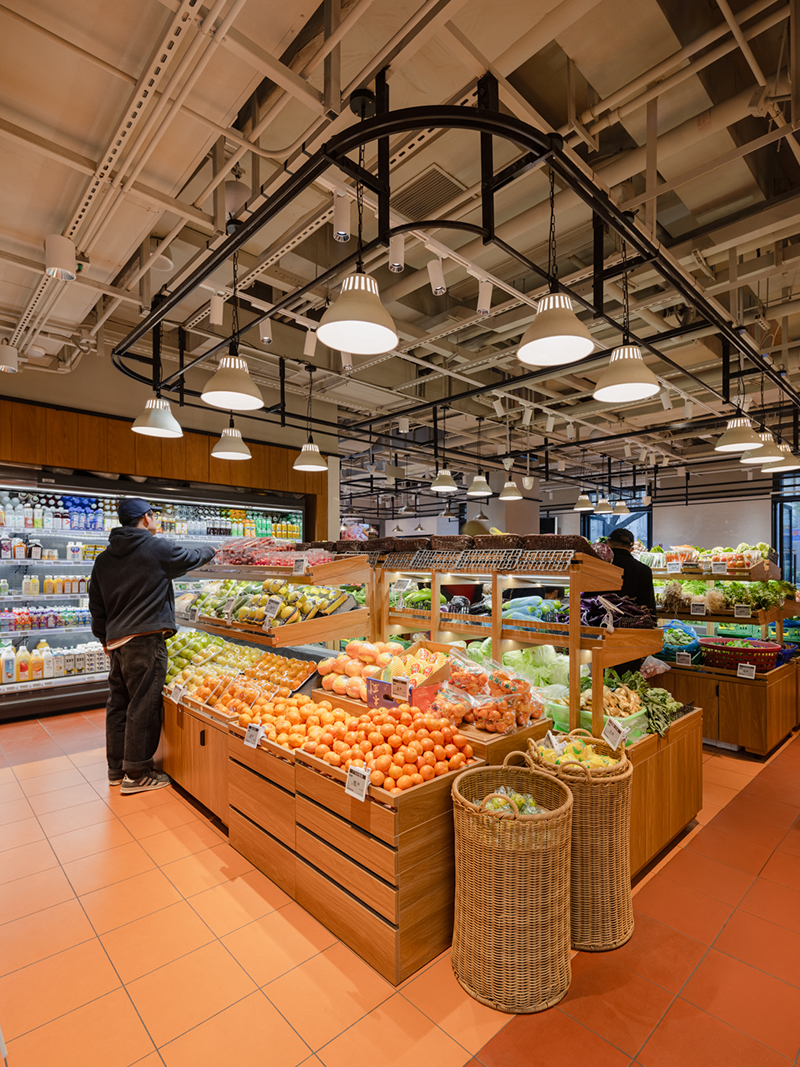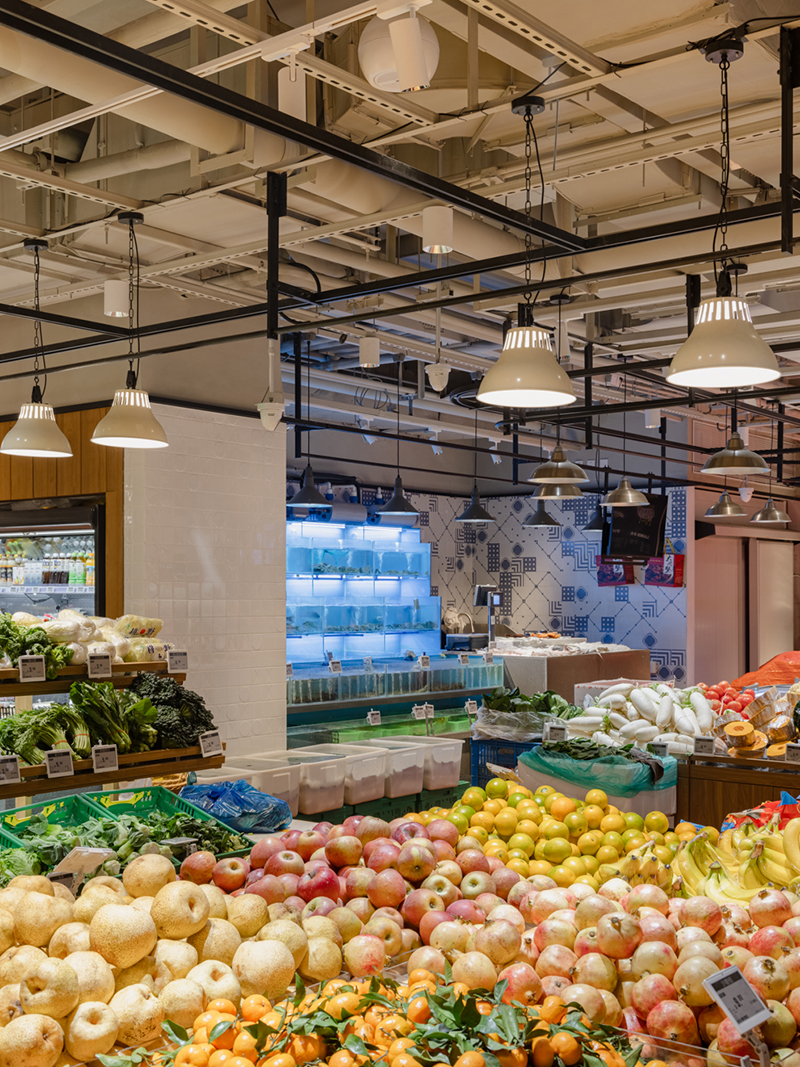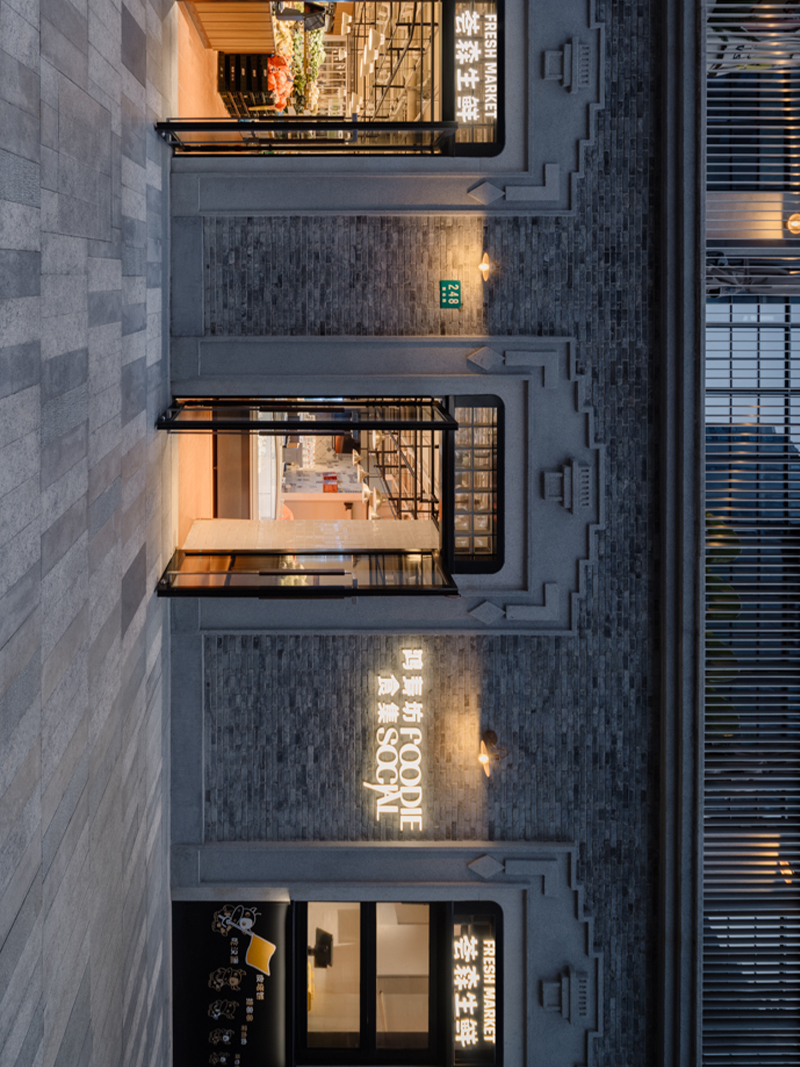The food market in Chinese culture and history has played a central part of daily life for local neighbourhoods. The ritual of buying fresh produce daily means the market is a place where public life is centered and communities are connected. Linehouse designed Foodie Social, a new food market catering for the neighbourhood of Hong Shou Fang, an area in Shanghai’s Putuo district prevalent in the typical Shanghainese ‘longtang’ laneway residential architecture. Conceived by developer Shui On, this new typology brings together the local with more curated food offerings in a contemporary yet humble and sustainable way.
The development is comprised of a series of buildings laid out in the Longtang alley structure of the original Hong Shou Fang site. The largest building is a two-storey grey brick market hall where Foodie Social is housed. Linehouse conceived the interior of this market as that of a greenhouse. A central double height atrium space is carved out and lined with a series of undulating balconies that serve as occupiable seating niches and planters. Green hanging plants spill over the railing, where visitors can spectate the active market scene below.
The patterned paving from the outside lanes extends into the market, and in spring and autumn the large glass doors are pulled open to fully connect the interior and exterior. The glass pitched roof above the atrium is lined with a gently curved metal truss, drawing inspiration from the famous Victorian greenhouses. Natural sunlight, also introduced through skylights above second floor’s circulation corridors, streams into the market hall during the day, creating brightness and vibrancy. Hanging from the metal truss, three large fans circulate the air in the atrium, reducing the need for mechanical dependency. Below the pitched roof, a central drinks vendor, integrated with a metal staircase that encourages visitors to move between floors, extends up over two floors to create an open stage for visitors and cater for seasonal events. Tables and chairs are arranged around an olive tree planted in the middle of the atrium.
Sourced from demolished houses in China and showing their natural patina, recycled red bricks line the entrance façade and interior walls, in direct contrast to the existing grey brick. On the front façade, a double-height arrangement of stacked red bricks and a corten steel canopy mark the main entrance into Foodie Social. Inside, the bricks are stacked to create three dimensional patterns as they move from wall to wall.
The market features various typologies of food vendors. Centered in the middle of the open atrium on the ground floor are market stalls designed with various permutations of permanency to allow for flexibility for different types of vendors. Some stalls are designed to be retractable, placed in strategic positions to allow for a large open space for events in the middle. The stalls are designed as a kit of parts allowing the vendors to create their own signage and layout but maintaining a uniformed material and lighting palette. On the ground floor’s perimeter are smaller fixed snack shops, while larger fixed restaurants occupy the second floor. Restaurants are encouraged to spill out onto the generous circulation corridors and to occupy the balconies around open atrium.
As part of the larger market is a smaller wetmarket which caters for the local community and can also be accessed from the building’s street frontage. Opening earlier than the main market, at 6am, the wetmarket is the place for locals to buy fresh vegetables, fruit, meat and fish at parity prices. Linehouse designed this space as a robust functional space; lined with a red terracotta tiled floor, timber fixtures and shelves, and a black metal rail system that sails above the stalls to hang produce, signage, and lights.
The role of the market in the larger cities in China has inevitably changed due to the rise of online food deliveries. The commercial success of Hong Shou Fang shows that new progressive placemaking and diverse offerings can redefine the meaning of the market within a community.
鸿寿坊食集,上海
联图设计的鸿寿坊食集是为鸿寿坊街坊量身打造的复合型社区市集空间,是瑞安房地产在上海普陀区操盘的城市更新项目。
中国人的日常生活离不开菜市场,去菜场购买新鲜食材成为颇具仪式感的市井文化。菜场不仅是公共生活的中心,也是街坊邻里交流的场所。鸿寿坊始建于1933年,到如今已有近百年的历史,鸿寿坊食集焕新上海的里弄记忆,汇聚本土美食和精选商户,构建市民文化的生活图景。
鸿寿坊还原了原址鱼骨状肌理的石库门建筑结构,其中体量最大的就是鸿寿坊食集所在的双层灰砖独栋建筑。 联图的设计灵感来自于欧洲维多利亚时期的温室建筑, 以12米高的中庭为核心,呈现开敞式步行流线,二楼的走道/阳台形成回形动线,可供餐饮外摆,也可以摆放绿植。 绿意盎然的植物从二楼栏杆蔓延垂下,顾客在逛走同时也能倚靠在栏杆上俯瞰市场的热闹场景。
鸿寿坊户外街区步道的地面石材一直延伸到食集内部,天气温暖的春季和秋季,入口通高的玻璃门敞开后模糊了室内与室外的界限。 中庭上方坡屋顶采用金属桁架加固,玻璃天窗可以打开通风并将自然光带入食集,让食集空间更加明亮,更有活力。 屋顶的金属桁架吊挂了三个复古大型风扇,不仅环保、低耗能、增加空气流通,减少对机械通风的依赖,更增加了空间的质感。 一楼中央的橄榄树周围设置了活动桌椅供顾客使用。 通往二楼的金属楼梯旁边是售卖饮料的档口,二楼的楼梯平台是一个多功能空间,根据不同季节的运营计划可以做舞台表演,也可供顾客就餐休憩。
鸿寿坊食集入口外立面和室内隔墙采用老房子回收的红色陶土砖建造,与主体结构的灰砖形成鲜明对比。精心设计的红砖堆叠造型延伸至两层楼高,与耐候钢材质的顶棚框出鸿寿坊食集的主入口。食集内部空间的墙面沿用回收的红砖,在墙与墙之间打造充满立体感的图案。
联图同时还设计了鸿寿坊食集的档口和租户导则,以满足食集内各种业态的摊位归置需求。一楼开放式中庭的档口是食集的中心,一部分是固定的档口不可移动,便于不同品类的租户按需经营。一部分档口采用可移动设计,需要时可以调整大小或移动,形成大型活动空间。档口的设计充分考虑到未来的灵活归置,通过模块式组件组装完成,租户可以在导则的范围内自行设计标识和装饰,选择材料和照明。食集一楼沿着建筑边界是面积较小的固定的小吃档口,二楼是面积较大的餐厅, 走道两侧也可以用于餐饮外摆和品牌展示。
食集内还设置了一个精致小巧的平价菜市场,主要面向附近的社区居民,除了从食集内部进入也可以从新会路入口进到菜市场。菜市场早上 6 点开始营业,营业时间早于食集, 供应平价的新鲜蔬菜、水果、肉禽和水产。联图设计的菜市场注重实用性和功能性:地面铺设红色陶土砖,展陈和货架采用木质材料,天花固定的黑色金属环形的轨道系统用于悬挂农产品、标识和灯具。
联图针对鸿寿坊食集的创新设计充分挖掘了市民生活的记忆与温度,融合可持续发展的设计思路,助力打造充满“精致烟火气”的社区美好生活。
建成时间:2023年
项目面积:2,000平方米
室内设计:联图
设计主创: Alex Mok
主管建筑师:Cherngyu Chen
设计团队:过烨铃, 王菲, 王珏, 王龙文, 邵爱文,周凯航,娄云彬, Xiaoxi Chen, Tom Grannells
项目地址:上海新会路236弄
照片版权属于©Wen Studio
Foodie Social Hong Shou Fang
- Year of Completion : 2023
- Area : 2,000sqm
- Client : Shui On
- Architect : Linehouse
- Design Principle : Alex Mok
- Associate in Charge : Cherngyu Chen
- Design Team : Yeling Guo, Fei Wang, Wang Jue, Norman Wang, Aiwen Shao, Mia Zhou, Yunbin Lou, Xiaoxi Chen, Tom Grannells
- Photo credit : ©Wen Studio
- Project Address : 236 Xinhui Road, Shanghai
